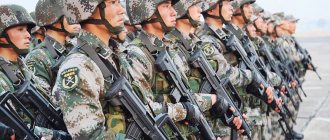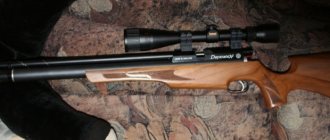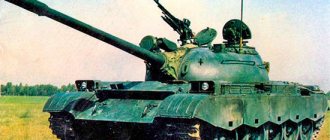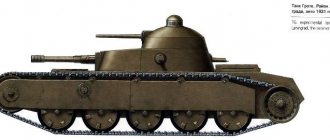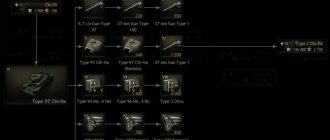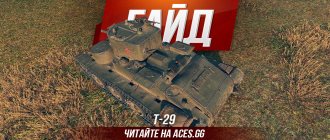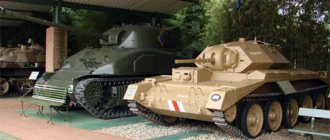The beginning of the twentieth century was marked by a number of events in the history of China, due to which the government of the Celestial Empire seriously thought about arming the country. At first, the armed forces used armored vehicles captured or purchased from other states. The main purchases of tanks were made in France and Great Britain. France supplied about 500 Renault FT-17 light tanks with machine gun armament to China. In the 1930s, the UK supplied single-turret Vickers Mk E infantry fighting vehicles, which were rejected by the British army.
In the 20s of the 20th century, the first factories appeared in China to serve tank forces - there was no talk of producing their own vehicles yet. There was no full supply of spare parts, so they made do with what was available in warehouses and equipped some combat vehicles with spare parts from others. By the beginning of the Sino-Japanese War, supplies increased. The USSR and Germany were added to the equipment supplying countries. China purchased about 100 T-26 tanks from the Soviet Union.
After World War II, the USSR sold the PRC the first technical documentation and license for the production of the legendary T-54 tank. It was in 1957 that the history of Chinese tank building began.
How are Chinese armored vehicles different?
Over the past 50 years, Chinese tank building has come a long way in development, strengthened its position in the world, and now the design school and production capacity are at a high level. Some modern models of military equipment produced in the PRC are on a par with armored vehicles produced by defense enterprises of the Russian Federation and America, and some surpass their Western counterparts in tactical and technical characteristics.
The advantage of China's defense industry is that the state has the resources to increase defense spending relative to GDP.
Advantages and disadvantages
Surely you have noticed that this unit has its strengths, weaknesses, but also controversial sides, when everything seems to be good, but not quite. Now, so that there are no questions, we will analyze these nuances point by point, highlighting the pros and cons. Pros: • Powerful one-time damage; • Good armor penetration; • Strong turret armor; • Thick sides with screens; • Excellent mobility; • Decent review. Cons: • Poor accuracy; • Uncomfortable vertical aiming angles; • Weak hull armor (especially NLD); • Long recharge.
MBT – 2000
The third generation main battle tank was the result of joint work with Pakistani engineers. The Chinese 90-II was used as a prototype. The MBT-2000 became the export version of the type-96 production tank.
The first version was released from the assembly line in 1991 and was aimed at testing, which simultaneously took place in two countries. Only in 2000, the first batch of vehicles was accepted into the balance of the Pakistani army. As a result of the modification, the equipment was as follows:
- the diesel engine was adapted to work in hot climates;
- maximum speed: 65 km/h;
- Fuel range: 550 km;
- armament: 125 mm cannon and two different-caliber machine guns.
Soviet engineering developments from the most popular T-72M tank were used in the chassis of the vehicle. It is due to the use of the engine that this tank receives a visible advantage over other models, and Bangladesh purchases these vehicles on favorable terms.
Type 58 – just forward!
This tier 6 medium tank has similar characteristics to its Soviet prototype T-34-85. He has less ricocheting armor and different gameplay due to the installed weapons, but he is a rather interesting representative in the Chinese branch, which is worth pumping out. The advantages of the type are high DPM rates, good dynamics and decent accuracy for the sixth level. It is worth installing a rammer, coated optics and reinforced aiming drives in the equipment slots. This will allow you to play quite comfortably and deal a large amount of damage in each battle. This medium Chinese tank leads directly to two vehicles that are interesting in their own way - T-34-1 and IS-2. All representatives of the branch are quite interesting, but, as always, the 6th and 8th levels are important, as well as the most basic one - the 10th. Therefore, it is tanks of these levels that we consider in the article.
WZ-111
The WZ-111 heavy tank was intended to be a copy of the Soviet T-10, which was considered the pinnacle of heavy tank building in the USSR. Additional armament consisted of a machine gun and a coaxial anti-aircraft gun. The crew was supposed to consist of 4 people, three of whom were supposed to fit in the tower
The model had a lot of disadvantages:
- the torsion bar suspension could not withstand the total weight of the tank, which was 49 tons;
- the fighting compartment turned out to be inferior due to the cramped turret;
- due to the impressive size of the breech of the gun, the internal filling of the turret was not assembled;
- the armor had low rigidity, which negatively affected the strength of the hull.
Due to the insufficient experience of Chinese designers, the idea of developing a heavy tank based on the developments of the past was a fiasco. The car did not pass tests, and in 1960 the project was closed. What it could have been like can only be judged from archival photos.
Brief overview of the thread
The entire line is quite popular among players, and this is primarily due to the fact that Chinese tanks are similar to representatives of the legendary USSR vehicles. The main difference is the armor, which is less ricocheting and slightly worse than its Soviet counterparts. In addition, they have weaker weapons. But in comparison with other branches, Chinese tanks have a number of advantages that other vehicles do not have.
Reviews about the “Chinese” are quite mixed. Many people claim that their branches of medium and light tanks are the best, but this cannot be considered a fact, because there are many who do not consider Chinese tanks worthy. Feedback from players highlighted the machines in this rather difficult branch, which are presented in the table below.
| Name | Level | Vehicle class | Player ratings |
| M5A1 Stuart | 4 | Light tank | 10/10 |
| Type T-34 | 6 | Medium tank | 9/10 |
| 59-16 | 6 | Light tank | 9/10 |
| Type 58 | 6 | Medium tank | 8/10 |
| WZ-132 | 8 | Light tank | 10/10 |
| T-34-2 | 8 | Medium tank | 8/10 |
| 110 | 8 | Heavy tank | 7/10 |
| 113 | 10 | Heavy tank | 8/10 |
| 121 | 10 | Medium tank | 9/10 |
Let's look at the Chinese tanks shown in the table above in more detail. Let's start, of course, with an excellent level 4 LT.
MBT – 3000
The first prototype of the new MVT-3000 combat vehicle was released in 2012. The development of the model was based on early successful tank models.
Visually, the tank resembles previous models. Features of MVT-3000:
- diesel engine 1200 hp;
- built-in dynamic protection, consisting of three types of armor;
- main weapon: 25 mm launcher with guided missile launch function;
- The tank's ammunition load consists of 38 shells;
- updated digital hunter-killer fire control system.
The MVT-3000 tank, designed by Chinese designers, is a competitor to the Russian model of the T-90S tank and is produced not for the needs of the PRC’s own army, but for export to third countries.
WZ-132 – furious firefly
Despite its large size, this LT is very mobile and dynamic. Its main advantage is considered to be excellent weapons with high one-time damage and high armor penetration. The tank is very similar to the Soviet T-54 “lightweight” prototype, but has weaker armor and a less penetrating gun. Despite this, its viewing quality surprises all players - it is one of the best in the game. Poor UVN is considered a disadvantage.
The equipment here is the same as on any Chinese firefly: optics, rammer, stereo tubes. If you are making a damage dealer out of this LT, then install a vertical aiming stabilizer instead of the pipes. This light Chinese tank is similar to the previous vehicle - WZ-131, except that it has higher performance in all respects. Of course, if you compare this prototype with the lightweight version, then certainly the Soviet counterpart will be the winner in the dispute. Reviews about this vehicle are extremely positive, and all thanks to the huge overview, one of the best in the game, and excellent weapons that allow you not only to shine, but also to shoot damage.
Type-62
The Type-62 light tank was developed in China in the 60s. The purpose of its creation was to carry out combat missions in difficult, difficult terrain and for use in amphibious operations. Today, the type-62 combat vehicle model is used by the armed forces of Albania, Mali, Congo, Vietnam and other countries. This model is also produced for the needs of the People's Republic of China.
During the production of the tank, the Type-59 model became the prototype. The combat weight was reduced by half and is 20.5 tons. Model features:
- the control compartment is located in the bow;
- in the stern there is an engine compartment;
- the hull is made of armor reaching 35 mm in thickness, and on the turret up to 50 mm;
- armament includes an 85 mm cannon without a stabilizer, 7.62 mm guns - 2 pcs.;
- after the shot, the barrel is purged by an ejector;
- the effective shot range reaches 1.9 km;
- ammunition includes 47 shells;
- frequency of shots per minute: 3-5.
As practice has shown, the firepower of a combat vehicle is not enough for a full-fledged battle, and the tank’s armor is too vulnerable to hand grenade launchers.
59-16 – if he grabs it, it will be to death
This is a very interesting machine for lovers of dynamic games and active light. This light tank has an interesting drum and the ability to install a gun rammer (which is usually not available for drum tanks). Beginner players ask: why is this so? It's actually simple. The 59-16 light tank has a stock gun with gold shells, and the rammer is very useful in this case. The overview of this LT is good and allows you to shine on all maps in the game quite comfortably. But at the 7th level of the light vehicle branch, a real damage dealer will be waiting for you - WZ-131, but it is not as interesting as the next one after it, WZ-132, which we will talk about later.
Most players, according to reviews, have a record for illuminated damage on this particular firefly. If you use coated optics and stereo tubes as equipment, then you will certainly overexpose 100% of your enemies, which, of course, is a huge advantage of this machine. The dynamism of this Chinese is amazing. Thanks to it, the car not only actively shines, but also shoots a lot of damage into the karma of enemies.
Type-80
The Type-80 tank was developed by engineers in 1982 on the basis of the Type-79 model. It has an updated chassis design with hydraulic shock absorbers on the road wheels. The main differences were:
- turbocharged diesel engine to increase the tank's mobility in battle;
- rubber side screens;
- fire control system with telescopic sight;
- 105 mm cannon and two machine guns of 7.62 mm and 12.7 mm caliber.
The ammunition includes unitary shells produced by China at its own factories under licenses from well-known companies.
This combat vehicle is in service only with the Chinese Liberation Army and various modifications of tanks were created on its basis.
History of Chinese tank building
Until the 17th century, China was practically isolated from the outside world. Thanks to this, on the one hand, it preserved a unique culture and could definitely be called a great power for its region. On the other hand, the isolation of the Celestial Empire led to the fact that it was, as it were, taken out of the historical context and developed at a very slow pace. As a result, when the Europeans began their expansion into China, there was practically nothing to oppose them.
At first, the Chinese did not really understand what they were threatened by contact with the “round-eyed barbarians.” Europeans were accepted only as representatives of another nationality, who came to voluntarily recognize the wise power of the Chinese emperor over themselves. But time very quickly put everything in its place. A confrontation began in which China was obviously doomed to defeat.
No matter how hard the rulers of the Qing dynasty tried to protect China from foreigners, they failed to do this fully. Jesuit missionaries penetrated the country, simultaneously with the conversion of residents to the Christian faith, studying the state, in fact, intelligence. The British, who really wanted to expand their empire at the expense of rich China, began to import opium into the country. This drug has become a real disaster for the Middle Kingdom. Prohibitions and the fight against smuggling led to the Opium Wars, in which China was defeated and actually became a semi-colony for European countries. In addition to Britain, France, Germany and Japan tore pieces away from China. Although to a somewhat lesser extent, the Russian Empire also took part in this process. However, its relations with China were relatively correct and sometimes even close to allied ones.
The beginning of the twentieth century turned out to be very turbulent for China. The Xinhai Revolution took place in 1911–1913, proclaiming the beginning of the Chinese Republic. After this, in 1913, the so-called “second revolution” took place under the leadership of Sun Yat-sen. She was suppressed, and a military dictatorship reigned in the country under the leadership of Yuan Shikai. In 1915, an attempt was made to restore the empire with Shikai on the throne, but this “innovation” lasted only a year. In 1916, Yuan Shikai abdicated the throne and soon died. After his death, a large number of militaristic political groups formed in China. Some of them received support from Japan, others from England and the USA.
Since 1912, there has been a party in China called the Kuomintang. It was led by Sun Yat-sen. Ten years after this, the Communist Party appeared in the country. It was led by Chen Duxiu. From 1922 to 1927, the Communists and the Kuomintang were in an alliance whose main goal was to fight militaristic groups. At this time, China actively cooperated with the Soviet Union and Germany. The USSR sent military advisers to the country who helped in training the local armed forces, and Germany supplied a variety of equipment, as well as setting up industry in the country.
In 1927, the Kuomintang and the Chinese Communist Party parted ways. Kuomintang troops expelled the communists to the northern provinces, and the party, which by that time was led by Chiang Kai-shek, Sun Yat-sen's successor, finally seized power in the country.
In 1937, the war between China and Japan began. In fact, relations between these two countries have long been very far from good neighborly. But now the confrontation unfolded in full force and continued until the defeat of Japan in 1945.
During the described period of time, the Chinese armed forces of all existing coalitions used armored vehicles produced by other states. Tanks were either purchased or captured from opponents in battle. Here are examples of tanks used by the Chinese army.
Britain, which had rather unique views on the concept of tank forces, managed not to become interested in the Vickers six-ton tank, which was very smart for those times. As a result, the lion's share of these tanks produced in England was exported. And China was one of the buyers, along with the USSR, Poland, Finland, Argentina and a number of other countries.
From the French, China bought an equally famous vehicle - the Renault FT 17. This tank can generally be called an outstanding phenomenon, since it was in it that the layout that later became classic was first used: the engine in the rear of the vehicle, the central location of the fighting compartment and the gun located in the entire rotating tower.
Since China was at war with Japan, it was inevitable that a certain number of captured tanks would appear in the Celestial Army
of this state. Around 1940, Japanese Chi-Ha tanks began to appear under Chinese banners. These fifteen-ton vehicles carried a 57 mm gun, had bulletproof armor and could reach speeds of up to 19 kilometers per hour over rough terrain. By European standards, this was not a very high figure, but for Japan, the Chi-Ha was a fairly advanced machine.
With the outbreak of World War II, the range of Chinese tanks was replenished with American M5s. As part of the Lend-Lease program, these tanks were supplied to China in significant quantities. Again, it should be noted that while these vehicles were quite weak for the European theater of operations, for China they were quite acceptable.
After the end of World War II, the Soviet Union and China were on such friendly terms that Chinese leaders directly asked the Soviet Union to help upgrade the country's armored fleet. IS-2, T-34-85 tanks, SU-100 self-propelled anti-tank guns and IS heavy tanks began to arrive in China. But the real date of birth of Chinese tank building as a completely independent one should be considered 1957, when the Soviet Union sold China several copies of the T-54 tank and technical documentation for its production.
The T-54 was an extremely successful combat vehicle. In the Soviet Union, it was in service for 30 years - a very significant period for the technology of the rapid and dynamic twentieth century. China was truly lucky to begin the development of its tank building with this combat vehicle.
Based on the T-54, China created the Type 59 medium tank. Serial production of this machine was organized at a plant in the city of Baotou, Inner Mongolia province. Soviet specialists took part both in the construction of this plant and in the launch of the tank into production. The first modifications of the vehicle were a complete copy of the Soviet T-54. Subsequently, the design was changed to simplify production and adapt the machine to operate in the climatic conditions of Southeast Asia.
There were about six varieties of the Type 59 tank, produced in different years and distinguished by additional digital and letter indices.
Thus, the Type 59-I, which began production in the early 1960s, was armed with an improved 100-mm cannon, equipped with a newer fire control system, infrared surveillance devices, and a gun stabilization system. In the eighties, laser rangefinders were installed on the tank. True, they were placed poorly - above the gun mantlet outside, so that the devices were vulnerable to shrapnel and bullets. Then a series of Type 59-II tanks was released, on which an Israeli 105-mm gun was installed instead of a licensed copy of the 100-mm Soviet D-10T cannon. It was distinguished by high shooting accuracy. Armor-piercing sub-caliber projectiles with fins were created especially for this Chinese gun. At a distance of up to 2500 meters, these shells, even at an acute angle, penetrated 150 millimeters of armor. Subsequently, experimental modifications of the tank with a 120-mm cannon were also produced, and the tank was tested and further developed by British designers. These days there is a highly modernized version of the machine called the Type 59D. It is equipped with dynamic protection, a very advanced fire control system, as well as a gun whose shells penetrate up to 400 mm of armor.
In addition, in 1963, it was on the basis of the T-54 that its lightweight version “Type 62” was put into production. This tank weighing 20.5 tons was produced in approximately 1,200 copies. The Type 62 was produced not only for the Chinese army, but was also actively sold to other countries. In total, it was in service with about 11 states of the world.
Among the interesting experiments of Chinese designers, the heavy tank of the WZ-111 project should also be noted. This vehicle was developed in the early 1960s as a replacement for the Soviet IS-2 and IS-3 tanks, which were in service with the Chinese army, but were already outdated. Objectively speaking, the need for a heavy tank in those years was already doubtful. However, the Chinese still worked on a vehicle that resembled the IS-3 in its hull design with frontal armor built on the “pike nose” principle. This tank was supposed to be armed with a 122-mm separate-loading gun. The matter did not go further than the construction of one prototype: the project was closed. But one copy of the WZ-111 with a turret model was nevertheless built, and it is currently on display at the Museum of the People's Liberation Army of China.
China launched its own tank-building industry quite late. But this state began to use armored vehicles much earlier. And almost always these were cars that were among the best for their time. In addition, when the Chinese began building tanks, they did not simply copy other people's equipment. The designers were actively involved in modernizing and improving tanks, making the most of the potential of combat vehicles. As a result, it often turned out that the Chinese modification of this or that technology was superior to its prototype. The dynamics of tank building development in China have always been only positive. And to this day, the PRC produces combat vehicles of a very high level, which are deservedly considered one of the best in the world.
You can discuss the material here.
Type-88
The photo shows the main second-generation combat vehicle Type-88. It was developed in 1982. When strengthening the hull, significant changes took place with multi-level armor in the frontal part - its thickness increased to 203 mm. Model features:
- 105-mm rifled cannon with a telescopic sight, machine guns of two calibers, smoke grenade launchers - 8 pcs.;
- The diesel engine has a power of 730 hp. With.;
- reaches speeds of up to 60 km/h;
- Cruising range on one fill: 430 km.
There is a radio station and intercom on board to ensure high-quality communication.
Type-98
The third generation armored vehicle was created by the Chinese engineering corporation FIRMAKO in the 90s. Structurally, the model resembles the main Russian tank T-72. In 1998, serial production was launched, and about 100 units of cars were rolled off the assembly line. The first demonstration of the tank took place in 1999 in Beijing during a military parade in honor of the 50th anniversary of the People's Republic of China.
Model features:
- ammunition load: 42 charges;
- efficiency: 8 shots/min.;
- thermal imager system for shooting in desert conditions;
- crew: 3 people;
- reaches speeds of up to 75 km/h.
The main feature of the Type-98 tank is the introduction of the new JD-3 laser system on quantum generators, designed for active protection.
Type-99
The Type-99 main battle tank was produced at the same time as the Type-98 and was displayed at the 1999 parade. This tank was a real achievement of the Chinese tank industry. Some elements were copied from the T-72, but many were recreated. According to experts, this vehicle can withstand Western tanks, but due to the high cost, the PRC will not equip its own army with such tanks. This unique vehicle is intended exclusively for elite paramilitary units.
Model features:
- the engine has a power of 1500 hp. With.;
- two machine guns: a coaxial 7.62 mm “86” machine gun with 2000 rounds of ammunition and an anti-aircraft 12.7 mm “W-85” with 300 rounds of ammunition;
- maximum speed on the highway is 75 km/h.
The Type-99 tank is capable of firing anti-tank shells. On board is a laser active protection system and a digital maintenance system.
Jaguar
A Chinese-American main battle tank that was planned as a low-cost export model for third countries. The prototype for the Jaguar model was the Type-59 and the legendary Soviet-made T-55. The work of the design team started in the mid-80s, and the following equipment was manufactured for the car:
- diesel engine from Detroit Diesel 8V-92TA with an effective power of 750 hp;
- support rollers with rubber tires;
- tower from the Cadillac Gage concern;
- M68 105mm rifled gun;
- thickened armor.
The use of a large number of American-made components made it impossible to produce the Jaguar tank after the US-China business partnership was severed. In 1990, the project ceased to exist, and the result of the work never saw the light of day.
Type T-34 – brother of the legend
This ST is an excellent copy of the Soviet T-34, having similar weapons and similar hull armor. A group of tanks is capable of causing a lot of noise in the enemy team; their hole punchers have excellent penetration and quite high damage for this type of vehicle. The disadvantage is usually poor UVN, but this is not so critical. The tank is passable and leads to two excellent representatives of the Chinese branch. Reviews about this car are mostly positive. The gun helps the stats get a good WN8, while the average stats on the server are very low. This vehicle is often used by the first warriors and Kolobanovs, and this is not without reason - it is actually quite good, but it cannot be considered better than the legendary T-34.
WZ-523
An armored personnel carrier from the Chinese state defense concern NORINCO, presented at a festive military parade in 1984. This is the first Chinese-made armored personnel carrier, it has the following features:
- viewing angle 180 degrees;
- three windows for control visibility, protected by armored shutters;
- ammunition capacity is 600 shells;
- engine compartment in the middle part of the hull;
- The engine is made in China and has a power of up to 165 hp. With.
The armored personnel carrier is an amphibian: water-jet propulsors are structurally provided in the rear part, facilitating movement through water.
ZBL-09
Chinese infantry fighting vehicle from NORINCO, its second name is “Snow Leopard”. The technical novelty was presented in 2006, was supposed to become an export model of the infantry fighting vehicle and has the following features:
- has an advanced modular design;
- all-round armor protection protects against 7.62 mm shells;
- electronic battle control system;
- central tire inflation system.
The design includes two propellers, with the help of which the infantry fighting vehicle can force water obstacles at a speed of 8 km/h.
Type 97 infantry fighting vehicle ZBD-97 China
The Type-97 infantry fighting vehicle was adopted by the Chinese army in 2004. The model largely repeated the Russian BMP-3, and the manufacturer copied the entire fighting compartment. Machine characteristics:
- guns: two 100-mm smoothbore and 30-mm rifled automatic cannons, 2 smoke grenade launchers, a machine gun;
- torsion bar suspension;
- floats using water jet propulsion.
The Type-97 infantry fighting vehicle is in service with the Chinese army to this day.
Armored personnel carrier ZFB-05 China
The ZFB-05 armored personnel carrier was created on the basis of the Iveco NJ2046 4x4 and was supposed to be an export model for African countries. During development, the designers tried to achieve maximum cheapness of the model while maintaining the average parameters of the combat vehicle.
Model features:
- a steel body made of welded armored sheets does not provide the required level of protection against penetration by bullets;
- bulletproof glass in the driver's viewing window;
- a 7.62 mm, 12.7 mm machine gun and a 23 mm cannon can be mounted on the roof.
The following types of special transport were created on the basis of the ZFB-05: ambulance, command, radio broadcasting equipment, as well as a light air defense complex.
Crew training
In order to effectively play our tank, it is necessary to properly build a crew training plan.
We offer the following sequence of training:
- Commander (radio operator) – “The Sixth Sense”, “Repair”, “Combat Brotherhood”, “Radio Interception”;
- Gunner – “Repair”, “Smooth rotation of the tower”, “Combat brotherhood”, “Disguise”;
- Driver - “Repair”, “Smooth ride”, “Combat brotherhood”, “Disguise”;
- Loader – “Repair”, “Non-contact” ammunition rack, “Combat brotherhood”, “Disguise”.
Airborne combat vehicle ZLC-2000 China
To increase the combat power of their armed forces, the Chinese began work on developing models of airborne combat vehicles, and already in 2003 the ZLC-2000 model entered service. The sealed housing is made of armored sheets, which provide bulletproof and anti-fragmentation protection. Characteristics:
- all equipment is located in the tower from the Chinese company NORINKO;
- guns: 25/30 mm cannon, 7.62 mm and 5.8 mm coaxial machine gun, anti-tank defense complex with a supply of 3 shells;
- maximum damage distance is 3 km.
On modified samples, a gun stabilizer is installed. Many technological aspects are borrowed from landing vehicles produced in the Russian Federation.
Infantry fighting vehicle ZBD-2000 China
In 2005, the ZBD-2000 infantry fighting vehicle was created for the Chinese Marine Corps. The prototype was the American EVF AAAV. Purpose - high-speed landing on the shore of special units of infantrymen from military ships. The vehicle's body, made of armored sheets, provides reliable protection against large-caliber bullets in the frontal area.
Standard equipment:
- anti-tank missile launcher;
- 30-mm automatic cannon, stabilized in two planes;
- 7.62-mm machine gun;
- two 4-barrel grenade launchers.
- firing efficiency: 330 rounds/min., maximum range 4 km.
The weight of the infantry fighting vehicle is 8 tons, the crew consists of 3 people and 7 paratroopers. Movement on water is provided by two water-jet propulsors.
Unique Chinese armored vehicles have no analogues in the world and are in service only in the Chinese army.
M5A1 Stuart - fast avenger
This light tank occupies fourth position in the Chinese branch. In appearance, the car resembles the American M5 Stuart and has no less good mobility. In addition, the Chinese have an excellent weapon with good penetration and damage. Among the shortcomings, we should highlight a feature that is characteristic of all light tanks in the game - very weak armor. However, the M5A1 has excellent visibility, which allows for high-quality light on all maps. Next comes the first medium tank of the Chinese branch, which can be considered good.
Reviews about this car are mostly positive. Many tankers take their first masters on the M5A1, and this is not surprising. Despite its good stats, this machine has rather poor overall stats on the server, which suggests it should be used by players who want to level up their WN8. The characteristics are perfect for this.
